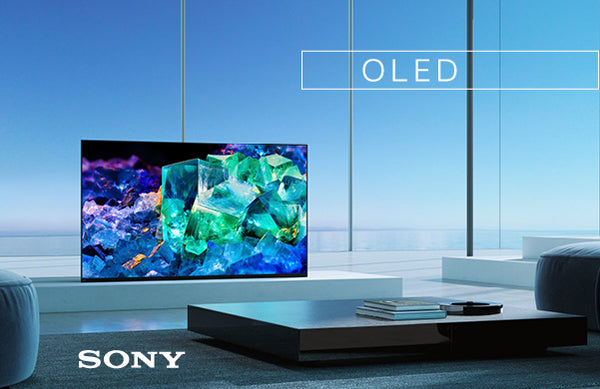
Explorer les avantages des téléviseurs OLED: un guide pour comprendre la technologie OLED
Les téléviseurs OLED sont une des dernières révolutions dans la technologie de la télévision, offrant une expérience visuelle immersive avec un contraste supérieur et des couleurs plus vives. Les écrans OLED (Organic Light Emitting Diode) utilisent des matériaux organiques pour produire de la lumière et présentent plusieurs avantages par rapport aux écrans LCD et LED traditionnels.
Ce guide vous expliquera les avantages de la technologie OLED et vous aidera à décider s'il s'agit de la bonne option pour votre installation de divertissement à domicile. Si vous recherchez une expérience visuelle imbattable, la technologie OLED est un excellent choix.
Avantages de la technologie OLED
La technologie OLED offre plusieurs avantages par rapport aux écrans LCD et LED traditionnels. Dans un écran LCD/LED, un rétroéclairage est utilisé pour produire de la lumière, ce qui peut donner à l'image un aspect délavé ou terne. Les OLED n'ont pas besoin de rétroéclairage car chaque pixel produit sa propre lumière. Les OLED produisent de la lumière à partir de matériaux organiques plutôt qu'à partir d'un rétroéclairage, ce qui signifie qu'ils sont plus fins et plus légers que les LCD les rendant parfaits pour les écrans muraux.
Les OLED produisent également des images plus lumineuses et plus vives, avec des niveaux de noir plus profonds et des angles de vision plus larges. Les OLED ont également un temps de réponse plus rapide que les LCD, ce qui permet d'obtenir des scènes d'action plus fluides et moins de flou de mouvement. C'est pourquoi les OLED sont souvent considérés comme le meilleur choix pour les systèmes de divertissement à domicile.
Enfin, les OLED sont plus économes en énergie que les LCD, consommant moins d'énergie et contribuant à réduire votre facture d'électricité.
Comment fonctionne l'OLED
La technologie OLED repose sur le principe de l'électroluminescence, qui est le phénomène par lequel un matériau émet de la lumière lorsqu'un courant électrique lui est appliqué. Les OLED utilisent un film mince de matériaux organiques qui émettent de la lumière lorsqu'un courant électrique est appliqué. Cette technologie de diodes électroluminescentes organiques (OLED) est utilisée dans les affichages pour créer une image sur un écran. Chaque pixel d'un écran OLED émet donc sa propre lumière et peut être allumé ou éteint individuellement.
Les écrans OLED sont constitués de plusieurs couches. La première couche est le substrat, qui est la base de l'écran. Cette couche est généralement faite de verre ou de plastique et fournit le support structurel de l'écran. La deuxième couche est la couche émettrice, composée de matériaux organiques qui émettent de la lumière lorsqu'un courant électrique est appliqué. La troisième couche est l'anode, qui est chargée de transporter le courant électrique. Enfin, la couche cathodique est chargée d'évacuer le courant électrique de l'écran.
Facteurs à prendre en compte lors de l'achat d'un téléviseur OLED
Lors du choix d'un téléviseur OLED, plusieurs facteurs doivent être pris en compte :
- Sa taille : les téléviseurs OLED existent en différentes tailles, des petits modèles de 32 pouces aux grands modèles de 77 pouces.
- La résolution du téléviseur car des résolutions plus élevées produiront une image plus nette.
- La fréquence de rafraîchissement du téléviseur : des fréquences de rafraîchissement plus élevées produisent des mouvements plus fluides.
- La compatibilité HDR du téléviseur car certains téléviseurs ne sont compatibles qu'avec certains types de contenu HDR.
- Les caractéristiques du téléviseur où certains modèles peuvent être dotés de fonctions supplémentaires telles que la commande vocale ou la connectivité Wi-Fi.

Conseils pour tirer le meilleur parti d'un téléviseur OLED
Une fois que vous avez un téléviseur OLED, vous pouvez suivre plusieurs conseils pour en tirer le meilleur parti.
La première consiste à s'assurer que le téléviseur est correctement calibré. Cela permettra de s'assurer que les couleurs et les niveaux de luminosité sont précis et que l'image est aussi claire et vivante que possible. Vous devez vous assurer d'utiliser les paramètres appropriés pour le type de contenu que vous regardez car des paramètres différents peuvent donner de meilleurs résultats pour les films ou les sports.
Un autre conseil est de s'assurer que votre téléviseur est connecté à un bon système audio. Les téléviseurs OLED ont généralement des haut-parleurs intégrés, mais ils ne sont pas forcément assez puissants pour produire un bon son. Un bon système audio rendra l'expérience visuelle plus immersive et plus agréable.
Enfin, vous devez envisager d'investir dans un support de télévision ou un support mural pour maintenir votre téléviseur hors du sol et conserver un meilleur angle de vue.
Conclusion
En résumé, cette technologie permet une meilleure qualité d'image car elle permet des noirs plus profonds, des couleurs plus vibrantes et des contrastes plus élevés. Les téléviseurs OLED ont également des angles de vision plus larges que les téléviseurs LCD traditionnels, ce qui signifie que les images restent nettes et claires même si vous n'êtes pas directement en face de l'écran.
Les téléviseurs OLED sont généralement considérés comme l'un des meilleurs choix pour les cinéphiles et les amateurs de jeux vidéo en raison de leur qualité d'image exceptionnelle. Cependant, ils sont généralement plus chers que les téléviseurs LCD, ce qui peut être un facteur à prendre en compte lors de l'achat.
Rendez-vous en magasin pour voir en démonstration les trois grandes marques de OLED : Samsung, Sony et LG. Nos conseillers sauront vous guider selon vos besoins.







Laisser un commentaire